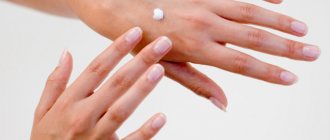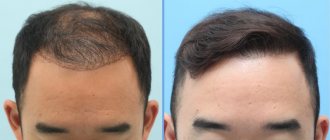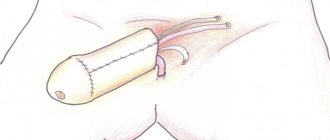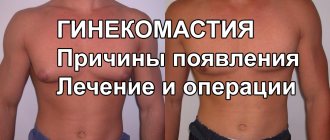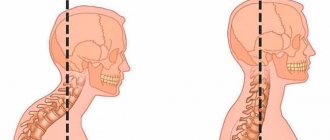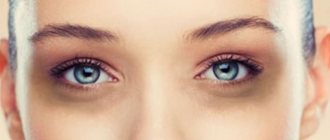Description of Dupuytren's contracture?
When a diagnosis of Dupuytren's Contracture occurs, we are talking about a serious pathology, accompanied by cicatricial degeneration of the tendons involved in the process of flexing the fingers. Over time, this disease can lead to limitation or complete impairment of flexion function.
The discoverer of this pathological condition and the developer of effective treatment methods was the French scientist Guillaume Dupuytren.
Despite the fact that this destructive process is not dangerous for a person, it can provoke a complete loss of ability to engage in work. If the disease is detected at the initial stages, its further spread can be prevented through conservative methods. When diagnosing Dupuytren's contracture in an advanced stage, the only way to restore flexion activity is surgery.
2. Reasons
Traumatic amputation of a finger today can occur for a variety of reasons: combat, terrorist attacks, transport accidents and industrial accidents. Among purely peaceful everyday causes, the leading cause is careless handling or (much less often) breakdown of various mechanisms and tools, especially high-speed electromechanical equipment. However, sometimes partial or even complete amputation of the finger phalanges also happens in an ordinary kitchen - if the household has well-sharpened cutting knives and hatchets.
Of course, the most dramatic (and difficult from a surgical and rehabilitation point of view) situation is created when fingers are damaged in children - as a result of pranks or a simple misunderstanding of the possible consequences. All responsibility here, in fact, lies with adults: cutting, stabbing, chopping, rotating objects should be completely inaccessible to a small child, and explained to older children and absolutely understandable in terms of purpose, mechanism of action and especially safety precautions.
Visit our Microsurgery page
Stages of development of Dupuytren's contracture
Taking into account existing statistical data, it can be stated that Dupuytren's contracture of the hand is observed in 3% of people in the world. Moreover, the most susceptible to the disease are males in the age category - from 40 to 60 years. In women, this pathological process is quite rare, in only 4-5% of cases.
Taking into account how pronounced palmar Dupuytren's contracture is, the following stages of development of the disease are distinguished.
First stage
It is characterized by the presence of a small subcutaneous nodule located under the ring finger. In this case, the patient does not feel any discomfort and continues to perform the usual hand movements. The fingers also do not lose their activity at this stage. As a rule, such nodules resemble ordinary calluses of a working person.
Second stage
Progressive stage. During this process, a scar cord appears on the palm. In this case, redness and roughening of the skin in this area are observed. Mobility in the damaged finger deteriorates and, most often, its ability to fully extend is impaired. However, pain syndrome is not detected in this case.
Third stage
The area of spread of the fibrous cord covers the entire finger. In this case, the skin located near the seal takes on a folded and wrinkled appearance. The affected finger is located at an angle of 90° relative to the palm. In addition, in this situation, a sudden deterioration in functional characteristics is monitored.
Patients note the absence of any pain in this part of the body. However, it is quite difficult to move this limb. At this stage, fusion of the joint surfaces may be observed.
Fourth stage
The affected area covers the entire palm or several fingers at once. As a rule, they coalesce into one large scar. The first injured finger assumes a bent position without the possibility of changing it, and significant deformation of the hand occurs. In some situations, patients note the appearance of severe aching pain, which is constant. The ability of the hand to perform any movements in this case is reduced to zero.
Make an appointment Online booking
- Clinic on Krasnopresnenskaya +7 (499) 252-41-35 Volkov lane, 21
- Clinic on Varshavskaya +7 (499) 610-02-09 Varshavskoe highway, 75, building 1
- Clinic in Annino +7 (495) 388-08-08 Varshavskoe highway, 154, building 1
1.General information
Surgery today is known to work miracles. However, the best of surgeons have always been distinguished by this, but modern surgery, armed with the principles of antiseptics, high technology and wise recommendations of the WHO, often actually demonstrates amazing operations that were completely impossible until recently.
Traumatic amputation of fingers and limbs has been a pressing problem for medicine since its inception (given the restless nature of humanity as a patient). It has not been possible to sew back something that has been torn off, bitten off, cut off, or chopped off for thousands of years, since such restoration requires clear ideas about what infection and necrosis are, what blood vessels and nerves are, what immunity is, and what the regenerative capabilities of a particular other fabric. In addition, it is advisable to have a good operating microscope. But today we have come close to the issue of head transplantation, and this issue is being discussed not in a science-fiction manner, but in a calm technological and methodological manner, as always happened before the development and implementation of any new technique in everyday practice.
As for the return of severed fingers to their original position, this will not surprise anyone for a long time: even schoolchildren know what to do and where to run in such a situation. Meanwhile, this microsurgical operation, and even with the task of at least partial restoration of motor function, is only slightly less “fantastic” in essence and complexity. Paradoxically, replanting an entire hand is easier than replanting one finger, and a toe is easier than replanting part of a foot. However, it is generally inappropriate to talk about any “simplicity” here.
The history of such operations goes back only a little more than half a century, but today finger replantations are performed all over the world, techniques continue to be improved, and the proportion of successful engraftments ranges (according to various data and depending on a number of indicators) from 65% to 90%.
A must read! Help with treatment and hospitalization!
Symptoms of Dupuytren's contracture
The above pathological process is characterized by signs that differ significantly from other diseases. These include the appearance of nodules and cords located under the skin. In this case, the process of finger extension is disrupted.
Dupuytren's contracture mildly manifests itself in the form of a small thickening on the surface of the palm in the area of \u200b\u200bthe spherical joints of the 4-5 fingers. As the disease develops, the size of the formation gradually increases. Subsequently, cords are formed that extend to the main and middle phalanges of the damaged finger.
As the tendon shortens, contracture occurs first in the metacarpophalangeal joint, and later in the proximal joint.
The density of the skin near the formation gradually increases, which is accompanied by its adhesion to nearby tissues, as well as the appearance of retractions and bulges. The cords and knot are clearly visible during finger extension.
Most often, when Dupuytren's contracture of a finger develops, a person does not experience any pain. Only 10% of patients report discomfort in the shoulder or forearm area. It should be noted that this disease is characterized by a progressive course.
What is reconstructive surgery?
In recent years, injuries among different groups of the population have increased. People have begun to exercise more often, and the number of car accidents is, unfortunately, growing every day. These factors can lead to dangerous consequences - injuries, deformations, complete loss of limbs or parts thereof.
Pediatric reconstructive surgery is a branch of medicine that deals with the reconstruction of damaged parts of the body. There are three goals:
- restore the anatomy and functionality of the limb;
- give it the most natural and aesthetic appearance using plastic manipulations;
- restore blood flow, nerve bundles and tendons that have been damaged.
Which doctor treats Dupuytren's contracture?
To identify palmar fibromatosis and carry out timely treatment measures, you need to contact a traumatologist or orthopedic doctor. In some medical institutions, these specializations are combined into one, and an orthopedic traumatologist deals with the elimination of pathology. To make a clear diagnosis, it is enough for the doctor to perform a visual examination of the patient and listen to his complaints.
During the appointment, the specialist visually assesses the condition of the palm, determines the presence and parameters of cords, and also studies the motor activity of the joints.
If Dupuytren's contracture is suspected, treatment can begin only after a “desktop test” has been performed and positive results have been obtained. During it, the patient places the hand on the table, palm surface down. If the palm and fingers are in contact with the specified plane, the result is negative. If there is even a small gap between the hand and the surface of the table, they make a conclusion about Dupuytren’s contracture and begin to look for ways to treat this pathological process.
Make an appointment Online booking
- Clinic on Krasnopresnenskaya +7 (499) 252-41-35 Volkov lane, 21
- Clinic on Varshavskaya +7 (499) 610-02-09 Varshavskoe highway, 75, building 1
- Clinic in Annino +7 (495) 388-08-08 Varshavskoe highway, 154, building 1
Advantages of finger plastic surgery in Belgium
The combination of modern surgical techniques and the latest equipment allows plastic surgeons in Belgium to achieve outstanding results even in almost hopeless cases. But in addition to high medical technologies, microsurgical treatment of hand pathologies in this country has other advantages:
- comfortable conditions for staying in the clinic in comfortable rooms equipped with everything necessary, including high-speed Internet;
- helpful nursing staff, always ready to help in any situation;
- carefully thought-out rehabilitation programs that reduce the recovery period by at least a third;
- modern postoperative pain relief regimens, including both traditional non-steroidal anti-inflammatory drugs and modern non-narcotic systemic analgesics (Katadolon) in combination with Pregabalin, Sirdalud, etc.
And all this is well complemented by the acceptable cost of both the surgical procedures themselves and the hospital stay.
For example, the cost of hand plastic surgery after an injury in Belgium will be on average one third lower than in European countries such as Germany or Switzerland.
Correction of congenital abnormalities or restoration of hands after injury can be done in Belgium in the following clinics:
- regional medical center CITADELLE;
- plastic surgery clinic CLARICE;
- burn center at the Queen Astrid Military Hospital;
- University Hospital SAINT-LUC;
- Erasmus University Hospital.
Find out which clinic in Belgium is best to perform finger plastic surgery in your case - write to us or request a call back. Consultation is provided free of charge.
Treatment of Dupuytren's contracture
The main goal of treating the destructive process described above is to reduce or completely eliminate scar degeneration in the palm area. At the same time, the choice of the most effective methods may be influenced by the degree of the identified disease and the severity of negative manifestations. Since such a pathology is characterized by deep tissue damage, its elimination should be carried out comprehensively, including the use of physiotherapeutic procedures and medications. If Dupuytren's contracture of the hand is diagnosed in an advanced stage, the patient may require surgery.
If Dupuytren's contracture is detected in the initial stages, treatment without surgery is allowed. Unfortunately, if the second, third and fourth stages of the disease occur, it will not be possible to eliminate it without surgical intervention.
To eliminate Dupuytren's contracture without surgery in Moscow, it is recommended to consult a specialist at the first manifestations of the disease, namely, when a small lump appears on the surface of the palm.
Treatment of Dupuytren's contracture with shock wave therapy
Among the well-known and highly effective methods of getting rid of pathology, the UVT procedure occupies a special place. It is prescribed for various disorders of the musculoskeletal system. During the treatment of Dupuytren's contracture with shock wave therapy, it is possible to achieve the maximum effect - to fragment the foci of connective tissue proliferation, as well as change its mechanical characteristics and destroy microstructural connections.
In addition, treatment of Dupuytren's contracture with shock wave therapy is not associated with any pain for the patient. However, the desired result can be obtained only when the patient exhibits primary signs of the disease. Moreover, a positive effect can be noticed after 1-2 sessions.
In our clinic, the SWT procedure is implemented using innovative Swiss equipment and under the guidance of specialists of the highest level, which eliminates any relapses, provides quick relief to the patient’s condition and allows normalization of motor activity in the fingers with an absolute guarantee.
Medicines for Dupuytren's contracture
If a patient is diagnosed with Dupuytren's contracture and treated without surgery, one cannot count on complete relief from the disease. By using medications, you can only slow down the rate of development of the pathological process. Their use is advisable in the first stages of the spread of the disease, as well as after surgery during the recovery period.
But the doctor can select effective medications to alleviate the symptoms of the pathology if the patient refuses surgical care.
Most often, such therapeutic measures are performed twice a year in the clinic. It is recommended to use the following medications:
- Glucocorticoids (Dexamethasone, Flosteron, Diprospan, etc.). In this case, treatment of Dupuytren's contracture is carried out using injections simultaneously with an anesthetic to relieve inflammation and pain;
- Collagenase. These are injections with Xiaflex, which are performed in the area of contracture in order to destroy collagen fibers in the connective tissue;
- Applications with proteolytic enzymes (Lidase, Trypsin, Ronidase, etc.). They are applied to the affected area to improve metabolism, slow down the process of tissue degeneration, and also soften dense connective tissue formations.
Physiotherapeutic methods for treating Dupuytren's contracture without surgery
Physiotherapeutic procedures are prescribed simultaneously with medications as part of a course of therapy. Unfortunately, it is impossible to completely get rid of the pathological process using such methods, and they are used exclusively at the first manifestations of the disease or during the rehabilitation period after surgery.
For Dupuytren's contracture, similar recommendations related to the use of physiotherapeutic methods can be provided to solve the following problems:
- In order to improve metabolic processes in damaged tissue;
- To soften connective tissue cords;
- In order to restore motor activity of the hand joints.
The following methods can be used to soften existing scar formations:
- Exposure to therapeutic mud;
- Thermal therapy method using heated paraffin and ozokerite.
In order to eliminate the tension of formed seals, the following can be recommended:
- Method using low voltage direct current;
- Exposure to radiation in the red and infrared range (Infrared laser therapy);
- Exposure to high voltage alternating current.
To reduce the rate of formation of new scar formations and resorption of existing strands, use:
- Compresses with the above proteolytic enzymes or electrophoresis.
To activate the muscles of the hand, use:
- Treatment method involving interference currents;
- Electromyostimulation.
In order to dilate blood vessels and increase blood flow in the damaged area, they resort to help:
- Ultraviolet exposure;
- Warm compresses.
Massage plays a special role in the treatment of Dupuytren's contracture, as it helps improve tissue elasticity and helps normalize blood circulation in the area of the palmar aponeurosis.
Hand surgery for Dupuytren's contracture
According to the majority of orthopedic doctors, if the flexion function of the finger deteriorates by more than 30°, surgical intervention is considered the only effective way to solve the problem. In this case, the surgeon must remove all existing scar formations and make every effort to restore normal motor activity of the cyst.
An important condition for achieving the desired result is an individual attitude towards each patient. In this case, the nuances of the course of the disease are taken into account: the area of the hand affected, the rate of development of the pathological process, age group, existing chronic diseases and other factors.
Currently, two types of surgical interventions are practiced: open and closed. The first type of manipulation involves the use of a special tool that is inserted into the palm to separate the tendons. In the second case, the hand is dissected and all fibromatous tissue is removed.
If we compare the above methods, then the closed type procedure is considered the most traumatic. However, after it the disease may re-develop. Considering this point, surgeons often focus on open surgery, during which it is possible to completely remove damaged tissue.
If a patient has a large number of adhesions, doctors resort to dermoplasty with the possibility of transplanting a healthy flap of skin.
It should be noted that after pathological tissue, the wound is drained, after which the skin is sutured and a tight sterile bandage is applied. It prevents the appearance of new scar formations and the formation of blood clots. Next, a fixation splint is applied to the fingers and hand.
After excision of Dupuytren's contracture, the patient is recommended to perform gymnastic exercises to help restore normal motor activity of the fingers.
Make an appointment Online booking
- Clinic on Krasnopresnenskaya +7 (499) 252-41-35 Volkov lane, 21
- Clinic on Varshavskaya +7 (499) 610-02-09 Varshavskoe highway, 75, building 1
- Clinic in Annino +7 (495) 388-08-08 Varshavskoe highway, 154, building 1
Treatment of Dupuytren's contracture at home
Simultaneously with the use of medications, treatment of Dupuytren's contracture without surgery involves the use of traditional medicine. In this case, baths, warm compresses and special sets of exercises demonstrate the greatest effectiveness.
For example, a pine bath allows you to relieve pain in the pathological area. To prepare it, use 500 grams of pine needles, which are filled with water (1 liter) and boiled for half an hour. The infusion period for the decoction is 24 hours. Use slightly warmed.
The folk method, based on the use of applications made from fresh sawdust, horse manure and clay, also gives good results. It is recommended to apply a similar mixture to the affected area 2 times a day. This method helps alleviate the symptoms of the disease.
Many patients resort to using a traditional herbal infusion using chamomile, calendula and eucalyptus. After a short boiling and infusion, sea salt (1 tbsp) is added to the broth and used as intended - for the purpose of steaming a hand damaged by the disease.
A special positive effect for Dupuytren's contracture of the right or left hand can be obtained by using chestnut infusion. To prepare it, fresh raw materials are crushed, placed in a container and ammonia is added there. Infuse the solution for 9-10 days. Use as a rubbing solution for at least 60 days.
Taking into account patient reviews about the use of traditional methods, we can conclude that they are insufficiently effective. That is why you should trust the treatment of Dupuytren’s contracture to an experienced specialist who can give the necessary clinical recommendations and provide an individual approach to each specific situation.
Rehabilitation period
Correct and qualified supervision of the patient in the postoperative period allows achieving a favorable outcome of limb replantation. After surgery, the patient is transferred to the intensive care unit or intensive care unit. The main task after the end of the operation is to prevent the possible numerous complications characteristic of this category of patients. The patient is constantly under medical supervision, which includes monitoring basic vital signs (blood pressure, ECG, pulse, biochemical blood test, etc.) and the state of the blood circulation of the replanted limb. Rehabilitation treatment consists of an integrated approach and includes: drug treatment, exercise therapy, massage, occupational therapy, electrical muscle stimulation, laser therapy, physiotherapy, hydrokinesitherapy and much more.
Preventive actions
Until now, experts have not been able to find the true causes of palmar fibromatosis. As a result, until now there are no specific measures to prevent the disease.
However, in order to minimize the likelihood of pathology, for those patients who have a genetic predisposition to Dupuytren's contracture, doctors advise against abusing alcoholic beverages and tobacco products. In addition, it is recommended to practice a healthy diet and abandon a specialty associated with excessive stress on the hands.
Forecast
When this pathology is detected, it is difficult to predict the nature of its further course, since it depends on the individual characteristics of each patient’s body. Thus, in one situation, a slight decrease in motor functionality can be observed for decades, in another, the rapid development of the disease is monitored.
In any case, the disease will certainly enter its final stage. In this case, the only effective way is to perform surgical intervention.
Diagnostics
The appearance of signs of exostosis requires contacting an orthopedist-traumatologist. At the appointment, the doctor carefully examines the finger, palpates the growth and finds out the nature of the symptoms. If a dense bone formation is detected, an x-ray is indicated.
With its help, you can not only diagnose exostosis of the toe, but also evaluate its location and size. The images also provide data on the degree of deformation of the distal phalanges and allow you to plan the most effective course of treatment. In rare cases, CT and MRI are additionally prescribed.
